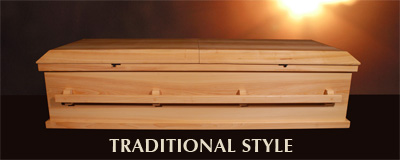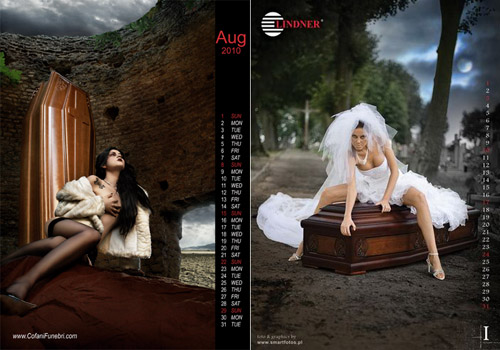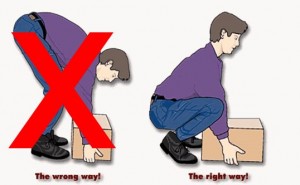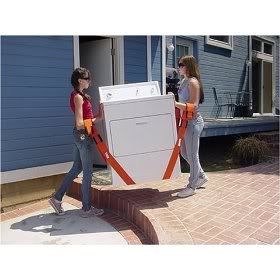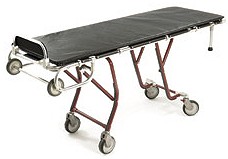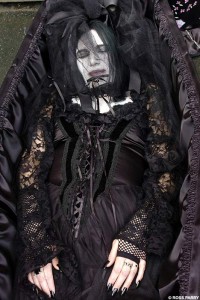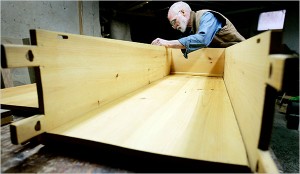 Brace yourself for some library science / classification / database search nerdery… or skip below to see a list of U.S. patents related to premature burial!
Brace yourself for some library science / classification / database search nerdery… or skip below to see a list of U.S. patents related to premature burial!
This morning I ran across a list of suspected premature burials with some interesting contemporaneous newspaper clips (it also links to How to Survive If You Are Buried Alive from the Worst-Case Scenario Survival Handbook — nice!).
It got me thinking: I love all those turn-of-the-twentieth-century inventions designed to save you in the event of your premature burial — bells attached to strings, extraneous air shafts and electrical devices that would detect your stirring corpse. I figured there must be patents on these, and sure enough: the United States Patent and Trademark Office (USPTO) provides them online.
Unfortunately their interface is exceptionally ugly, with a series of dazzling numbers and codes that make me salivate as a librarian oh sweet luscious data! but claw my eyes out as a blogger wanting to share something cool with reg’lar folk. In addition, many are images only that required a plugin I couldn’t make work. Argh! It’s all right there, and yet… not.
So I looked to our information overlord, Google. Google Patents draws data from the USPTO in the slick and familiar Google preview and downloadable PDF format (including all the fascinating line drawings). But, search fiend that I am, I could not in wholesale fashion extract what I wanted, either via keywords or using the US Classification field in the Advanced Search.
This allegedly corresponds to the PTO Manual of Classification for US Patents. The proper code, however — class 27 (undertaking), subclass 31 (life signals) — returned only a few results, with such oddities as “Optical Illusion Wear” and “Martial Arts Uniform Top.” A patent for a gi classified as a life signal device? Only if it improves one’s ability to karate chop out of a casket.
Stung by this death info travesty, I used the patent numbers from the USPTO list (generated by classification code) and found them on Google Patents, for the delight and convenience of the interwebs. (I did exclude a couple that were irrelevant, and there are a few below that seem more concerned with the living’s ability to monitor and view the dead… eek.) The dates below reference the filing date for the patent, not the issue date. Enjoy!
US Patents for detecting “life signals” / preventing premature burial
1984 — Apparatus and method for detecting body vibrations
1980 — Coffin alarm system
1954 — Safety release for refrigerators
1924 — Coffin
“This invention relates to an improved coffin and seeks, among other objects, to provide a coffin wherein a body may be preserved more or less indefinitely” with a sight tube extending from coffin to above ground “so that the body may be readily viewed in the coffin as desired.”
1921 — Attachment for coffin
“This invention has for its prime object the provision of a simple, inexpensive and durable device which can readily be applied to burial caskets for the purpose of enabling relatives and friends of deceased persons to view their features after interment.”
1912 — Life-detecting apparatus
1909 — Alarm for indicating life in buried persons
1909 — Apparatus for preventing human beings from being buried alive
1908 — Grave attachment
“This invention relates to new and useful improvements in grave attachments… whereby a body may be observed or watched after being interred.”
1907 — Safety-coffin
“This invention is distinguished from the already known arrangements by the fact that an opportunity is afforded the apparently dead person, when he awakens, of opening the coffin automatically, with very slight exertion on his part, so that he can immediately obtain a supply of fresh air and may afterwards leave the coffin.” In other words, it’s SPRING LOADED.

1903 — Apparatus for signaling from graves (Crosby and Henry)
1901 — Apparatus for signaling from graves (Griffith)
1900 — Apparatus for preventing premature burial
1899 — Electric device for indicating the awakening of persons buried alive
1899 — Coffin
“An improved coffin which permits the body to be kept during a certain time until decomposition sets in and, moreover, enables the person inclosed in the coffin to give warning if there has been a mistake.”

1897 — Apparatus for saving persons buried alive
1886 — Coffin
“My invention has relation to a coffin wherein the lid is provided with transparent doors or panels held down normally upon the lid against the tension of springs and adapted to be released and thrown upward from the lid upon the operation of a device located within the coffin.”
1886 — Apparatus for saving people buried alive
1886 — Coffin
“If the person buried in a state of trance opens his eyes on returning to consciousness, he sees light through the glass disks of the lid and will, on coming to his senses, unconsciously make a movement by which the mechanism which stands under the pressure of the springs is immediately released and the springing up of the lid is effected.”
1885 — Coffin
“We also supply the coffin with an electric battery, the wires therefrom leading though the air inlet pipe to an alarm on the outside of the ground, the circuit of said alarm being closed by a slight movement of the revivified person.”
1894 — Grave-signal

1893 — Grave-alarm
1892 — Coffin-signal
1891 — Annuciator for the supposed dead
1887 — Device for indicating life in buried persons
1885 — Burial-casket
1884 — Safety apparatus for the preservation of the dead until their burial
1882 — Device for indicating life in buried persons

1882 — Grave-signal

1878 — Improvement in coffin-torpedoes
1871 — Improvement in life-detectors for coffins
1868 — Improved burial-case
